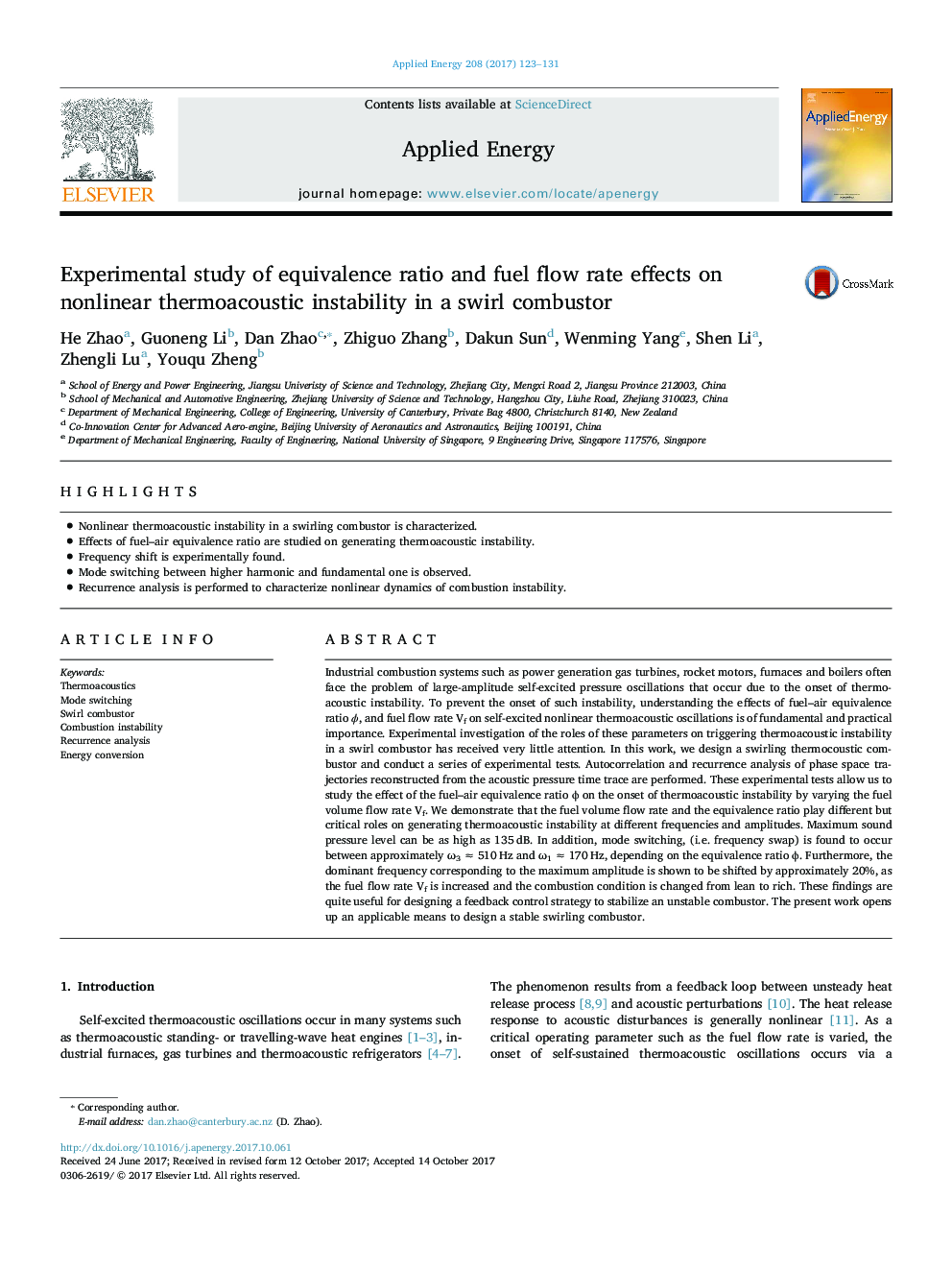| کد مقاله | کد نشریه | سال انتشار | مقاله انگلیسی | نسخه تمام متن |
|---|---|---|---|---|
| 6681630 | 1428082 | 2017 | 9 صفحه PDF | دانلود رایگان |
عنوان انگلیسی مقاله ISI
Experimental study of equivalence ratio and fuel flow rate effects on nonlinear thermoacoustic instability in a swirl combustor
ترجمه فارسی عنوان
بررسی تجربی نسبت عددی و جریان سوخت بر بی ثباتی غیرخطی حرارتی در یک توربو شفت چرخ
دانلود مقاله + سفارش ترجمه
دانلود مقاله ISI انگلیسی
رایگان برای ایرانیان
کلمات کلیدی
موضوعات مرتبط
مهندسی و علوم پایه
مهندسی انرژی
مهندسی انرژی و فناوری های برق
چکیده انگلیسی
Industrial combustion systems such as power generation gas turbines, rocket motors, furnaces and boilers often face the problem of large-amplitude self-excited pressure oscillations that occur due to the onset of thermoacoustic instability. To prevent the onset of such instability, understanding the effects of fuel-air equivalence ratio Ï, and fuel flow rate Vf on self-excited nonlinear thermoacoustic oscillations is of fundamental and practical importance. Experimental investigation of the roles of these parameters on triggering thermoacoustic instability in a swirl combustor has received very little attention. In this work, we design a swirling thermocoustic combustor and conduct a series of experimental tests. Autocorrelation and recurrence analysis of phase space trajectories reconstructed from the acoustic pressure time trace are performed. These experimental tests allow us to study the effect of the fuel-air equivalence ratio Ï on the onset of thermoacoustic instability by varying the fuel volume flow rate Vf. We demonstrate that the fuel volume flow rate and the equivalence ratio play different but critical roles on generating thermoacoustic instability at different frequencies and amplitudes. Maximum sound pressure level can be as high as 135â¯dB. In addition, mode switching, (i.e. frequency swap) is found to occur between approximately Ï3 â 510â¯Hz and Ï1 â 170â¯Hz, depending on the equivalence ratio Ï. Furthermore, the dominant frequency corresponding to the maximum amplitude is shown to be shifted by approximately 20%, as the fuel flow rate Vf is increased and the combustion condition is changed from lean to rich. These findings are quite useful for designing a feedback control strategy to stabilize an unstable combustor. The present work opens up an applicable means to design a stable swirling combustor.
ناشر
Database: Elsevier - ScienceDirect (ساینس دایرکت)
Journal: Applied Energy - Volume 208, 15 December 2017, Pages 123-131
Journal: Applied Energy - Volume 208, 15 December 2017, Pages 123-131
نویسندگان
He Zhao, Guoneng Li, Dan Zhao, Zhiguo Zhang, Dakun Sun, Wenming Yang, Shen Li, Zhengli Lu, Youqu Zheng,
